Labradoodles have exploded in popularity in recent years, capturing hearts with their adorable looks and friendly personalities. But are they the right fit for you? This comprehensive guide dives into everything you need to know about the Labradoodle dog breed, from their characteristics to their exercise needs, temperament, and potential health considerations. Get ready to discover if a Labradoodle’s happy spirit might just belong in your home with Canvas Personalized!
1. The Labradoodle Dog Breed Information

1.1. Key Traits Of Labradoodle
| Origin | Australia | Good With | Families, children, cats |
| Dog Breed Group | Hybrid Dog/ Designer breed | Temperament | Gentle, friendly, intelligent, and outgoing. |
| Common nicknames | None | Energy Level | Active |
| Height | 21 to 24 inches | Shedding | Infrequent |
| Weight | 50 to 65 pounds | Tendency to Drool | Low |
| Coat | Long, medium, and curly | Snore | High |
| Color | Brown, chocolate, liver, red, gold, yellow, cream, black, and white. | Bark | Infrequent |
| Life span | 10-15 years | Easy To Train | High |
| Other traits | Easy to groom but requires lots of grooming; tolerates being alone; low prey drive; loves water; apartment-friendly. |
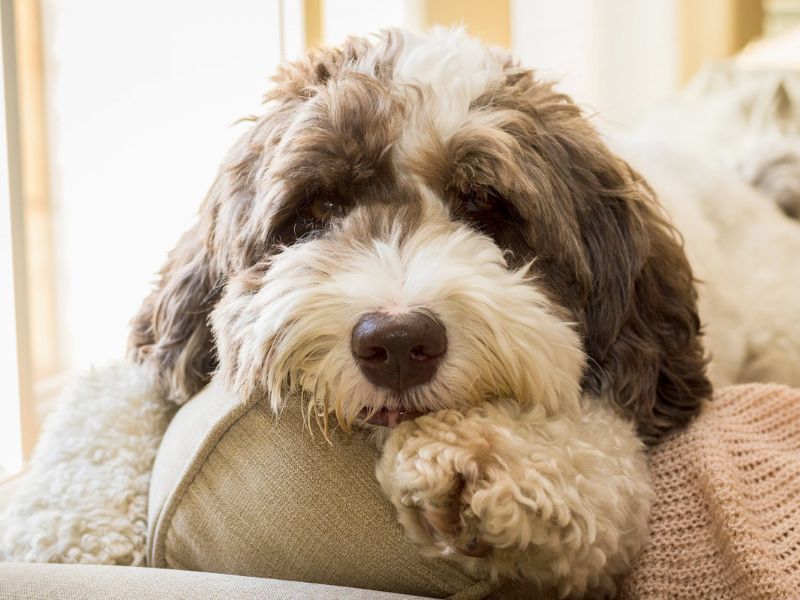
1.2. History
The Labradoodle’s story begins in 1989 with Wally Conron, a dedicated breeder for the Royal Guide Dogs Association of Australia. He crossed a Standard Poodle with a Labrador Retriever, hoping to create a hypoallergenic guide dog. The first attempt was a success. Sultan, the resulting puppy, had everything they were looking for, like a coat that wouldn’t trigger allergies, high trainability, and a friendly personality ideal for a guide dog. Sultan even became a working guide dog for a woman in Hawaii.
Other breeders saw the potential in this mix of Labrador Retriever and Poodle. These intelligent, friendly dogs with potentially non-shedding coats quickly rose in popularity. While many Labradoodles are still bred from Labrador Retrievers and Poodles, breeders have also begun creating multigenerational Labradoodles. The goal? To develop a more predictable and recognizable breed.
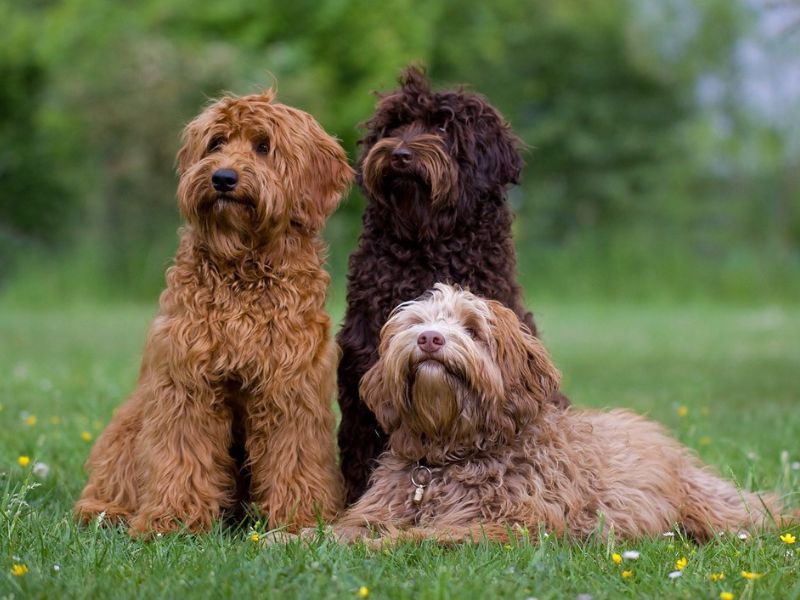
1.3. Appearance
Labradoodles generally have long legs, slender frames, and floppy ears.
Labradoodle dog breed comes in various colors, with the exact shade mainly depending on their parents’ fur. The Labradoodle can be found in multiple colors and patterns, including black, red, golden, blue, and silver.
This breed also comes in a variety of textures, but most have a medium-length coat (4-6 inches) that’s not too curly or fluffy. It’s a single coat, meaning they don’t have an undercoat. There are three main types:
- Hair coat: This fur sheds more, similar to other breeds.
- Wool Coat: This is the densest, with loose curls and a lamb’s wool feel. It usually doesn’t shed.
- Fleece Coat: This is the softest and silkiest, with a wavy or straight texture. It’s also non-shedding.
Due to their hypoallergenic breeding, Labradoodles shed far less than the average dog, making them a great pet for those who suffer from allergies.
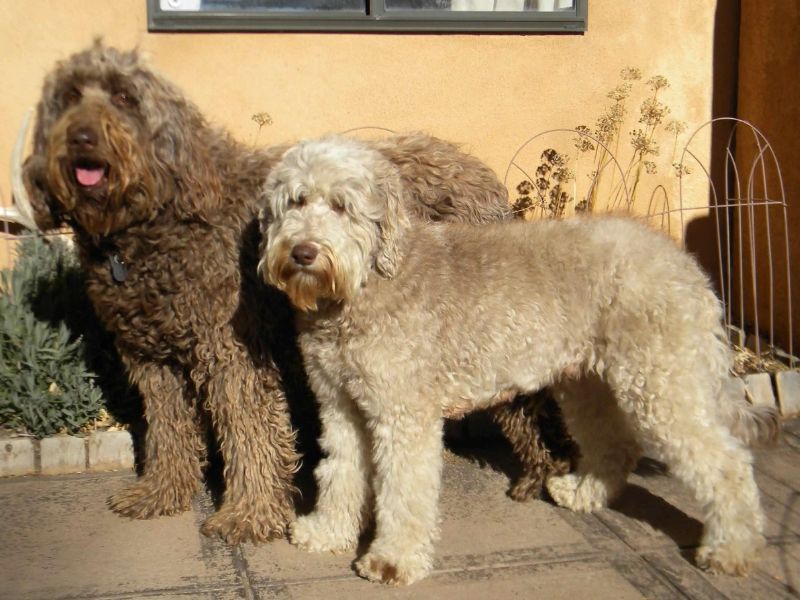
Like the coat, Labradoodle size also depends on the size of the first generation. These dogs often come in three different sizes:
- Standard: Males are 22-24 inches tall, females 21-23 inches, and both weigh 50-65 pounds.
- Medium: Males are 18-20 inches tall, females 17-19 inches, and both weigh 30-45 pounds.
- Miniature: These cuties are 14-16 inches tall and weigh 15-25 pounds.
It’s important to note that size can vary even within these categories, so some Labradoodles might be a bit bigger or smaller than expected.
>>> Get inspired and choose the cute food-themed or country-themed names for your new Labradoodle puppy!
1.4. Labradoodle Temperament
Labradoodles are intelligent pups that can be fantastic family dogs. With proper training, their eagerness to please and friendly nature make them great companions, even for young children. These friendly pups shower everyone with love and are always ready for adventure. They’re loyal to their family and full of energy, making them great active companions.
They can be gentle companions but also love to show their happiness with bursts of playful jumps. They’re generally pretty easygoing, thanks to their breeding to avoid aggression. Of course, individual personalities can vary, but a well-trained Labradoodle with their typical temperament is an absolute delight.
Labradoodle dogs are friendly not just with humans but also with feline housemates! Their easygoing nature makes them great companions for cats. This friendliness translates perfectly to therapy work, where their calm and affectionate demeanor brings smiles to patients and people in need at schools, hospitals, and rehabilitation centers. The breed’s versatility even extends to service dog roles.
This dog breed is generally able to handle being alone for a short period, although they may experience separation anxiety.
>>>Check out other types of doodle dog breed that you haven’t ever heard of before!
1.5. Ideal Living Environment
Labradoodles are adaptable pups! Even though standard Labradoodles are larger, they can still thrive in an apartment setting. The key for apartment pups, especially with limited yard space, is providing regular exercise and playtime to burn off their energy. Frequent trips to the dog park can be a great way to keep your furry friend happy and healthy.
1.6. Ideal Owner
Labradoodle dog breed is an excellent choice for self-assured first-time owners or families who already have some experience with dogs.
They are energetic and loving. The ideal parents should have an active lifestyle to match their pup’s energy and enjoy training to create a well-behaved best friend. With ample time for walks, playtime, and cuddles, these pups thrive in active families that can provide constant love and engagement. If this sounds like you, a Labradoodle could be your perfect furry companion!

2. How to Take Care of a Labradoodle Dog?

2.1. Health problems
Labradoodles are known for being a healthy breed, but like any dog, they are prone to certain health problems. While not every Labradoodle will develop these conditions, it’s essential to be aware of them if you’re considering welcoming one of these furry friends into your life. Here are some health conditions to look out for:
Otitis: Allergies, infections, or even getting something stuck in their ear can be the culprit. This irritation can lead to the ear canal being inflamed and super itchy. Treatments depend on the cause, ranging from ear drops to managing long-term allergies or infections.
Hip dysplasia: It is a condition that is passed down from parent to child in which the thighbone doesn’t fit tightly into the hip joint. When your Labradoodle is young, its hips may develop improperly, leading to this problem. Dogs will typically show discomfort by being less active and having trouble getting up, down, or around. The most reliable method of making a diagnosis is through X-ray screening. Consult your vet to determine the best course of treatment for your Labradoodle.
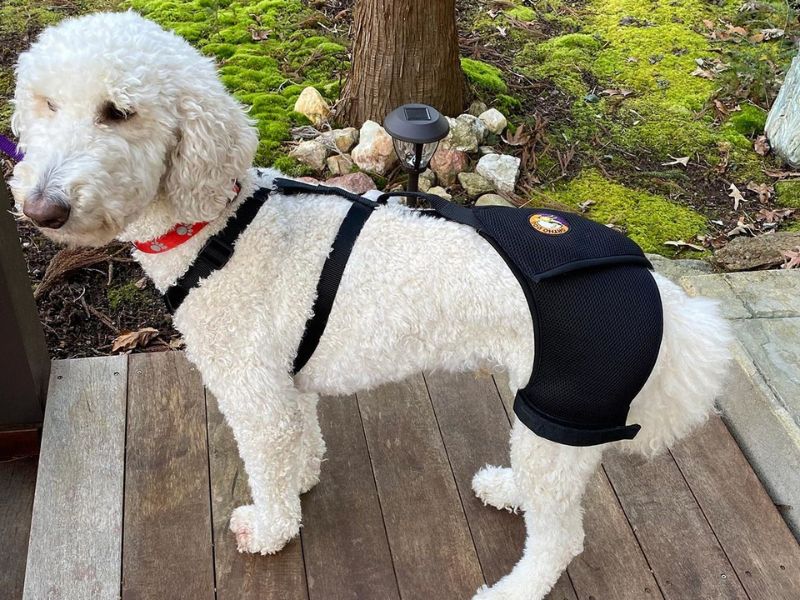
Elbow dysplasia: Similar to hip dysplasia, this is also a degenerative disease because of unusual growth and development. The degree of the condition varies: the dog can get arthritis or become completely lame.
Epilepsy: Labradoodles can sometimes inherit a condition called epilepsy. This affects their brain and can cause seizures. These seizures can be mild or scary, with some dogs acting strangely (like running frantically or hiding) while others might even fall unconscious with stiff limbs. The good news is that epilepsy doesn’t always show up, but it’s something to be aware of.
Allergies: Just like people, Labradoodles can suffer from allergies. There are three main types:
- Food allergies: These cause problems when your pup eats certain ingredients.
- Contact allergies: These are caused by touching something irritating, like their bedding, shampoo, or flea treatments.
- Inhalant allergies: These are triggered by things in the air, like pollen, dust mites, or mold
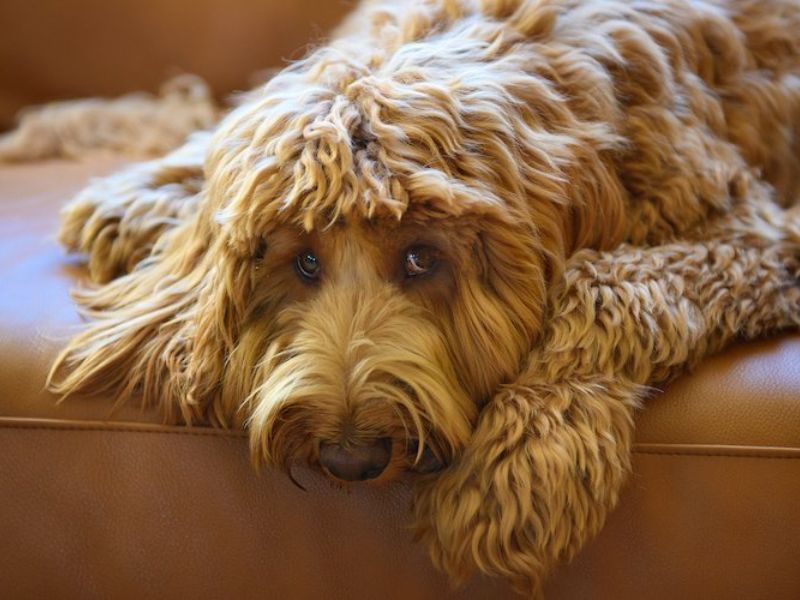
Diabetes Mellitus: Labradoodles, like many dogs, can develop diabetes. This means their body struggles to use sugar for energy. They might eat more but actually lose weight because their body isn’t using the food properly. Signs to watch for are frequent peeing and drinking, a big appetite, and weight loss. The good news is that diabetes can be managed with a special diet and insulin injections.
Progressive Retinal Atrophy (PRA) is a group of eye diseases in which the retina slowly worsens over time. As the condition worsens, affected dogs can lose their ability to see during the day and become blind at night quickly.
Hypothyroidism: Labradoodle dogs can sometimes develop hypothyroidism. This means their thyroid gland isn’t working properly, affecting their whole body. It can cause problems like epilepsy, hair loss, weight gain, low energy, and skin issues.
2.2. Labradoodle Grooming Needs
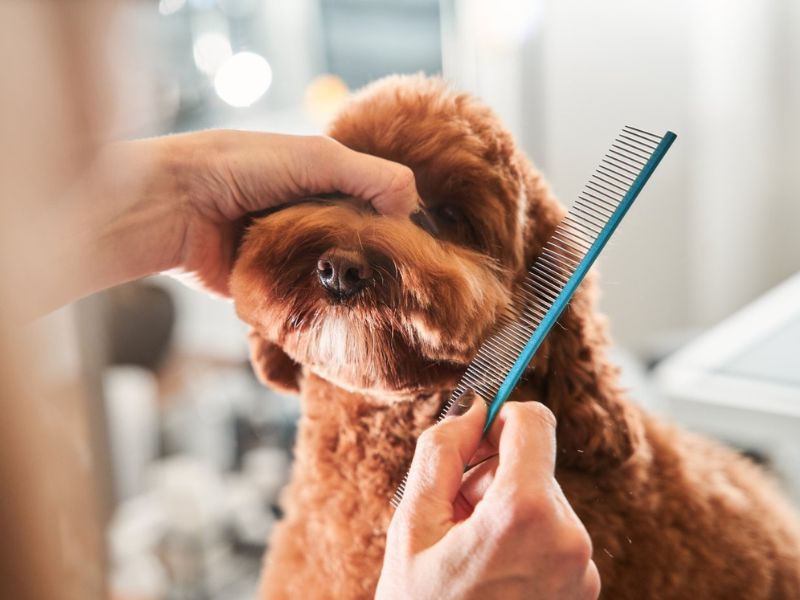
- Coat care:
Keeping your Labradoodle dog looking their best doesn’t take a ton of work! Brushing them once or twice a week will keep their coats tangle-free. Trimming or clipping their fur every 6-8 weeks is an option for easier maintenance. The good news is that baths aren’t needed frequently. Many Labradoodle coats don’t have that strong “doggy smell,” so baths are really only necessary when they get dirty.
>>> Discover the best dog grooming tools to brush your dog’s coats quickly and safely at home!
- Ear care:
Labradoodles, like Labs, may be susceptible to ear infections, so it’s essential to give their ears some extra attention when it comes to care. Make sure to dry and clean their ears after swimming, and regularly check for any signs of dirt, redness, or a foul odor that could indicate an infection. Periodically clean their ears with a cotton ball and a vet-recommended ear cleaner to prevent problems before they start.
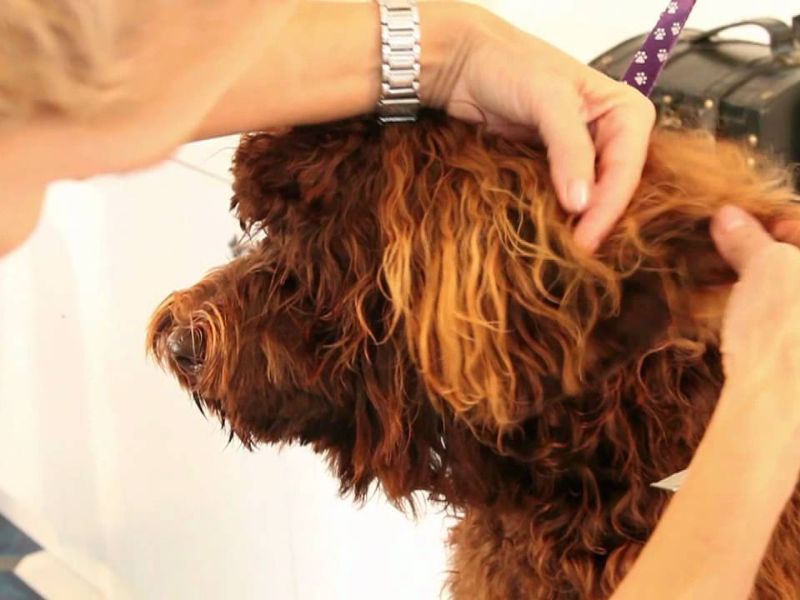
- Teeth care
Brushing your Labradoodle’s teeth is a must to keep their smile healthy! Aim for at least 2-3 times a week to remove plaque and eliminate harmful bacteria. Even better is brushing every day to avoid gum disease and foul breath.
- Nail care
Labradoodles need their nails trimmed every 1-2 months to prevent painful cracks or snags. A good rule of thumb is if you hear their nails clicking on the floor, they’re too long. Consult your vet or a professional groomer if you don’t know how to cut your dog’s nails.
Pro Tips
While you’re grooming your Labradoodle, keep an eye out for any warning signs like sores, rashes, redness, swelling, or tenderness. Check their nose, mouth, eyes, and even their paws for any issues. Healthy eyes should be clear and bright, with no gunk or redness. This quick weekly checkup can help you catch any health problems early on.
>>>Get more information about dog care tips to keep your dog healthy and happy!

2.3. Exercise Needs
Labradoodles are energetic pups! They need daily exercise sessions, ideally 30-60 minutes, to burn off that energy. Some Labradoodles, especially first-generation mixes, might even need more exercise.
The labradoodle dog breed is highly skilled in various canine sports and will find great pleasure in participating in agility courses that involve activities such as tunnel running, jumping hurdles, and pole weaving.
They enjoy going for jogs with you but also need some unleashed playtime to really let loose (in a well-fenced, secure area, of course!) Besides, most Labradoodles love to swim, making it a perfect activity. It’s also easy on their joints, so it’s an excellent option for older Labradoodles or those with joint issues.
Don’t forget to challenge their minds, too! These brainy balls of energy can get destructive if they’re bored. So, keep them active and engaged to prevent any chewing surprises.
Side Note
Although Labradoodles enjoy exercise, they also need to spend a lot of time relaxing.
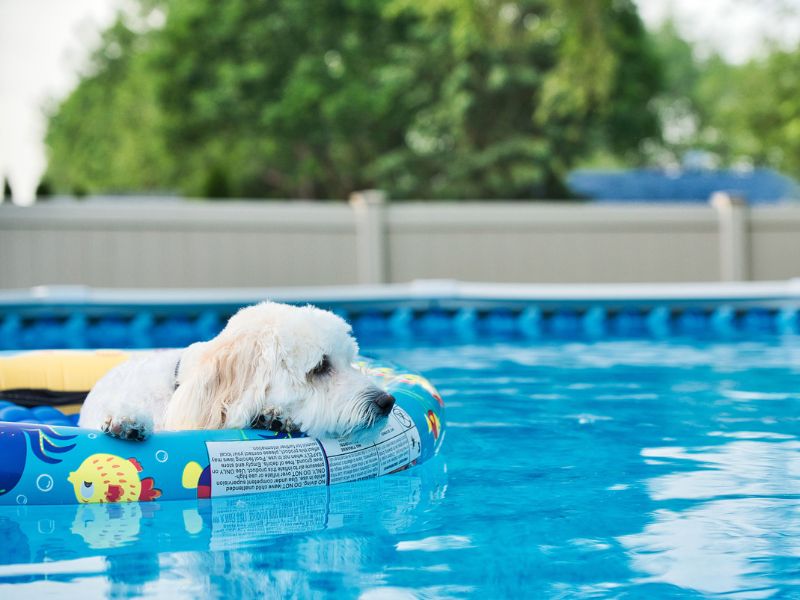
2.4. Training
The Labradoodle dog breed is highly trainable with the right approach; training may be simple, making it a fantastic choice for first-time dog owners. Training your puppy should begin immediately after you bring him home.
Even inexperienced dog owners can succeed with them because of their high trainability and rapid learning curve, so your dogs can learn anything from simple tasks like “sit,” “stay,” and “go potty” to complex feats of agility.

Crate training is a gentle method to prevent your Labradoodles from having accidents or getting into things they shouldn’t. Starting crate training early makes them comfortable with confinement, which can be helpful if they ever need to board or go to the vet. But remember, a crate isn’t a cage! They shouldn’t be stuck in there all day. Limit crate time to a few hours at a time, except for sleeping at night.
Like any other breed, Labradoodle puppies benefit significantly from early socialization to various stimuli, including other people, other dogs, new environments, and new situations. You can send them to a puppy kindergarten and take them on strolls around the neighborhood; these activities will help your dog improve their social abilities.

2.5. Nutrition
The amount of food an adult Labradoodle needs depends on age, size, activity level, and even metabolism (just like us!). A high-energy dog on the go will need more food than a lazy cuddle buddy. The general guideline is 1-2.5 cups of high-quality dry food a day, split into two meals. But remember, this is just a starting point! Keep an eye on your Labradoodle’s weight and adjust their portions as needed.
Higher quality dog food is packed with more nutrients, so you’ll actually end up feeding your Labradoodle less. Pet parents should prioritize finding foods that follow the standard food requirements of the Association of American Feed Control Officials (AAFCO).
Unlike adult dogs, Labradoodle puppies need special food to avoid growing too fast. The rapid growth can lead to joint problems later in life. Your vet can recommend the perfect puppy food to keep your little furball growing strong and healthy without the risks of growing too quickly.
Side Note
Labradoodles are at lower risk of gastric torsion (bloat) if you feed them two or more smaller meals a day instead of one large one. So, you shouldn’t leave food out all the time.
>>>If your Labradoodles have any allergy symptoms, check out these dog food for skin allergies to take care of them at home safely!
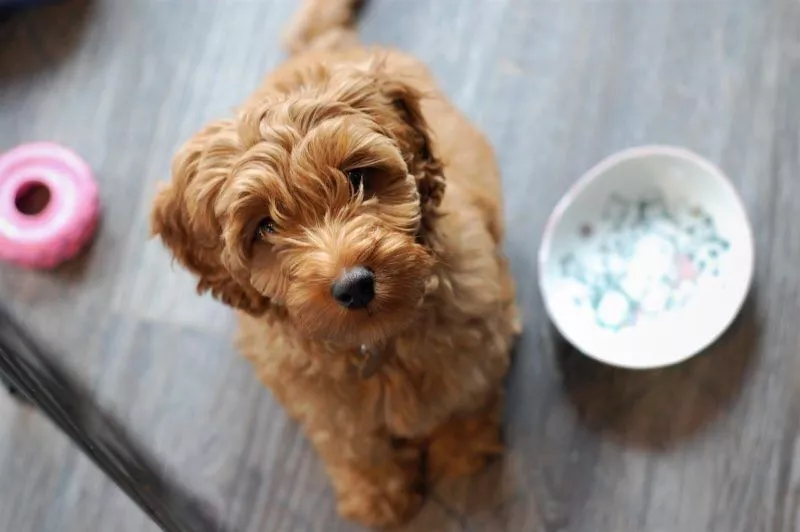
3. Getting a Labradoodle Dog
3.1. Labradoodle Price
Responsible breeders typically charge $1,500-$3,000 for a Labradoodle puppy. Show-quality pups with champion bloodlines can cost even more, ranging from $3,000 to $5,000.
Adoption is a much more budget-friendly option, with Labradoodle rescues charging adoption fees averaging $200-$500.
Consider including a deposit or waitlist fee, typically ranging from $200 to $500 that will be applied to the overall cost. Most breeders request this payment in advance when reserving your choice from the litter. It is crucial to fully comprehend the deposit terms and conditions in case you have a change of heart.
3.2. Labradoodle Breeders
Look for a licensed breeder with a good reputation. They should be able to show you proof of health testing (like hip and elbow scores) for both mommy and daddy Labradoodle. After all, healthy parents mean healthy puppies! Responsible breeders also want their pups to go to loving homes, so don’t be surprised if they ask you questions to make sure you’re a good fit for a Labradoodle.
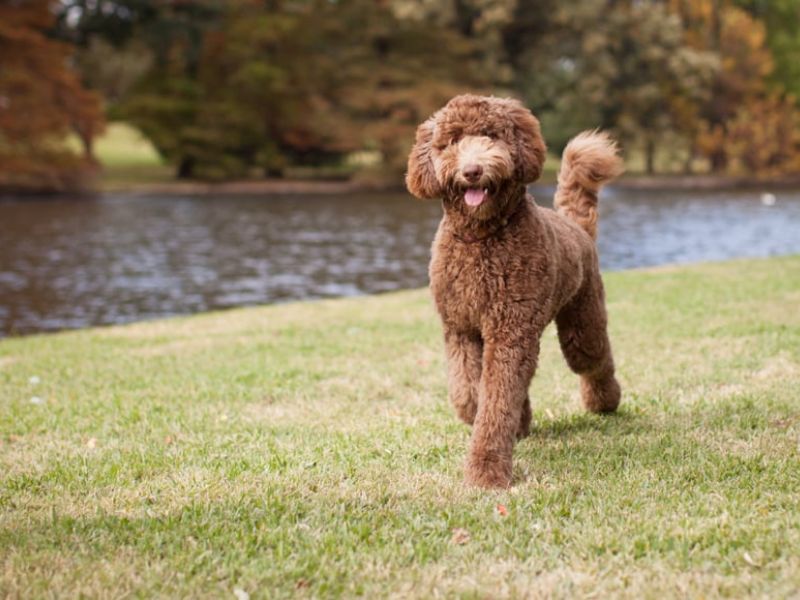
3.3. Labradoodle Rescues
Many people bring home these cute pups without fully understanding the commitment involved. Sadly, this can lead to Labradoodles ending up in shelters or rescues. Finding a Labradoodle-specific rescue might be tricky since they’re a mixed breed. Luckily, Labrador Retriever and Poodle rescues often take in mixed-breed dogs as well. So, consider expanding your search to include these shelters to find your perfect furry friend.
Here are some rescues you can consider:
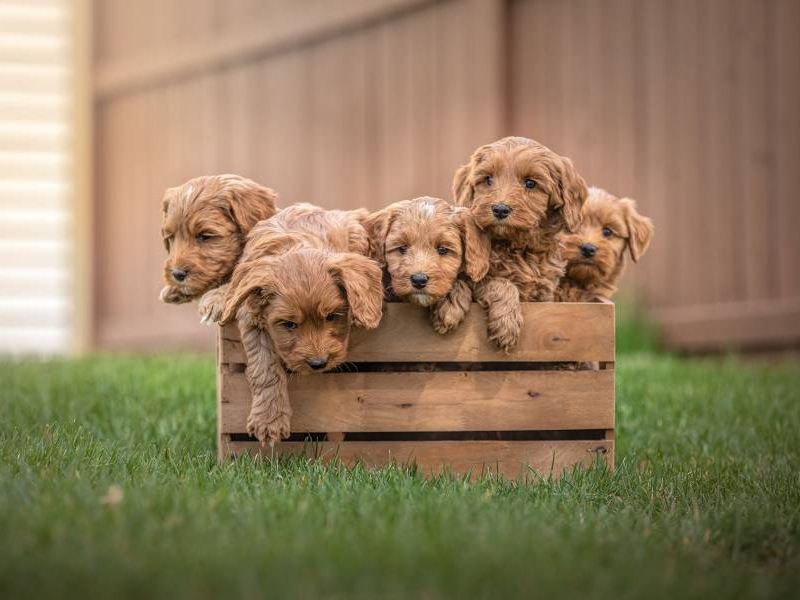
>>>Further reading:
- All About Aussiedoodle Dog: Traits, Health, and Caring
- Discovering The Great Dane Dog Breed: A Comprehensive Guide
- The Essential Guide To Care For The Golden Retriever Dog
- Top 14 Types Of Doodle Dog Breed: The Ultimate Guide
Labradoodles can be fantastic companions, showering their families with love and playful energy. If you’re an active individual or family seeking a loyal and intelligent dog, the Labradoodle dog breed might be your perfect match. Remember, responsible pet ownership is key! Provide your Labradoodle with proper training, exercise, and socialization to ensure a happy and well-adjusted pup. Canvas Personalized believes that with love and dedication, your Labradoodle will undoubtedly become a cherished member of your family.










